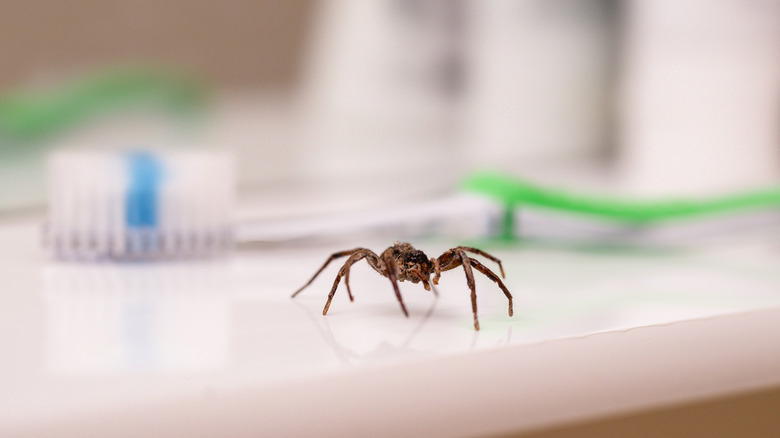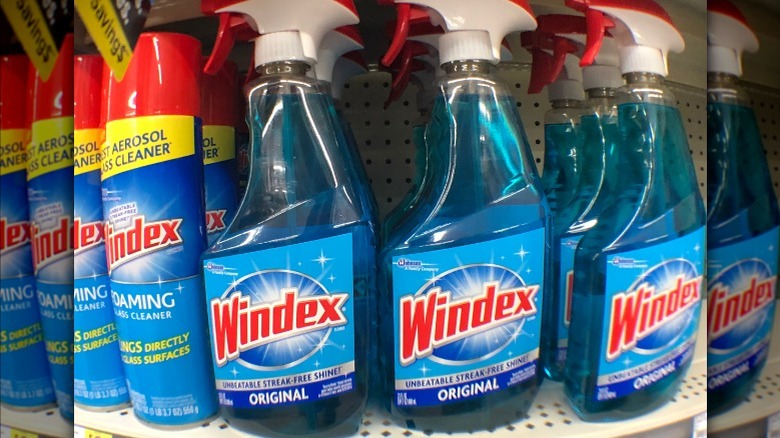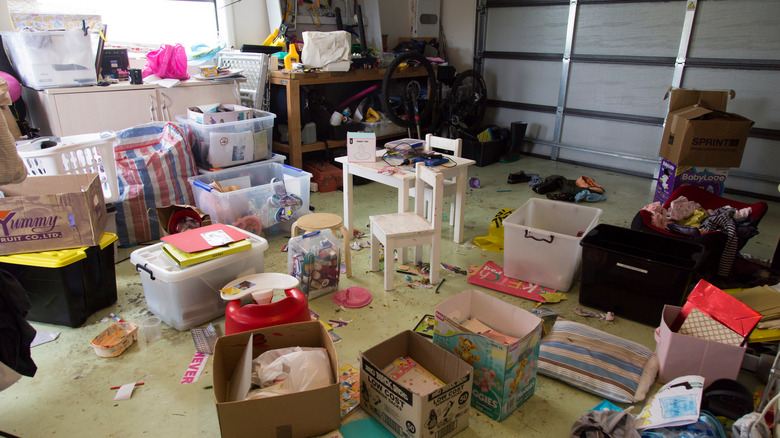Is Windex An Effective Tool In Getting Rid Of Spiders?
Everyone knows spiders are beneficial for the ecosystem. They keep pests like flies, roaches, and mosquitos out of your house, which means they also save you from the pathogens that those bugs can spread. But most of us still hate to see an arachnid scurry across the floor or up a wall — that's often enough to make us want to get rid of it, and fast. That's why the Windex hack has taken off on TikTok. Rather than using a shoe (or something similar) to kill the spider, you can just squirt it with Windex to eliminate it.
It seems that people like this method since it puts some distance between them and the arachnid; you don't have to squish it to stop it in its tracks. But is it an effective way to eliminate spiders? While we're all for using common household staples to stop spiders, is it actually worth your time? The answer is both yes and no. Yes, Windex will kill a spider — but it's not a practical way to get rid of an infestation.
The usefulness of this hack all depends on your situation. If you see one spider every couple of months, killing it with a cleaning staple you already have on hand should work just fine. But if your house tends to be regularly infested with them, Windex might not be the most convenient or effective method to get a handle on your problem.
Why the hack works — and why it doesn't
Pest control companies agree that the hack can be effective at eliminating one-off spiders. That's because Windex contains ammonia and sodium dodecylbenzene sulfonate, both of which are deadly to arachnids: Ammonia can eat away at their protective exoskeletons, and both chemicals can clog their breathing tubes and suffocate them. The latter ingredient, in fact, is both used as a detergent in cleaning sprays and as a poison in insecticides.
However, there are caveats to using this hack. You'll have to directly coat the spider in quite a bit of the product for it to be effective. It's also not an instantaneous kill; it might take anywhere from two to 15 minutes, which may not be as convenient as other methods. You will know the cleaner is working when the spider's body begins to curl, indicating that its body is shutting down.
While this is fine if you're trying to eliminate a single spider and can't bear to squish it, it's not the best method if you have an infestation. It doesn't kill or deter any spiders that are tucked away in hiding spots, allowing them to continue to live in your home. And since spiders like to frequent low-traffic, undisturbed areas such as basements, attics, and corners underneath furniture, it will likely be very difficult to find all of them on your own. They'll continue to come out and can only be eliminated if you spot and douse them.
What to do instead
To truly eliminate a spider infestation from your house, put the blue liquid down and instead pinpoint why you have so many spiders in your home. If you remove what is making your space so hospitable to them, you can lower your infestation numbers. For example, spiders go where there is plenty of food, so perhaps you have a fly or cockroach problem you need to address first. Spiders also love clutter since it creates an ideal hideaway to build their webs, so make sure your house is cleaned and decluttered on a frequent basis. Lastly, find and fill any gaps or cracks in your home that they might be using to sneak in.
Once the environment is addressed, you can move on to using methods like sticky traps to rid yourself of your unwanted guests. Leave these traps underneath furniture, in dark corners, and anywhere you see a spider web or spider activity; this will help you passively catch them without having to actually hunt them down yourself. If the infestation persists after a few weeks of utilizing glue traps, you might need to move on to professional insecticides and the help of a pest company. Save your Windex for your windows and let a more targeted approach eliminate your spider problem.


